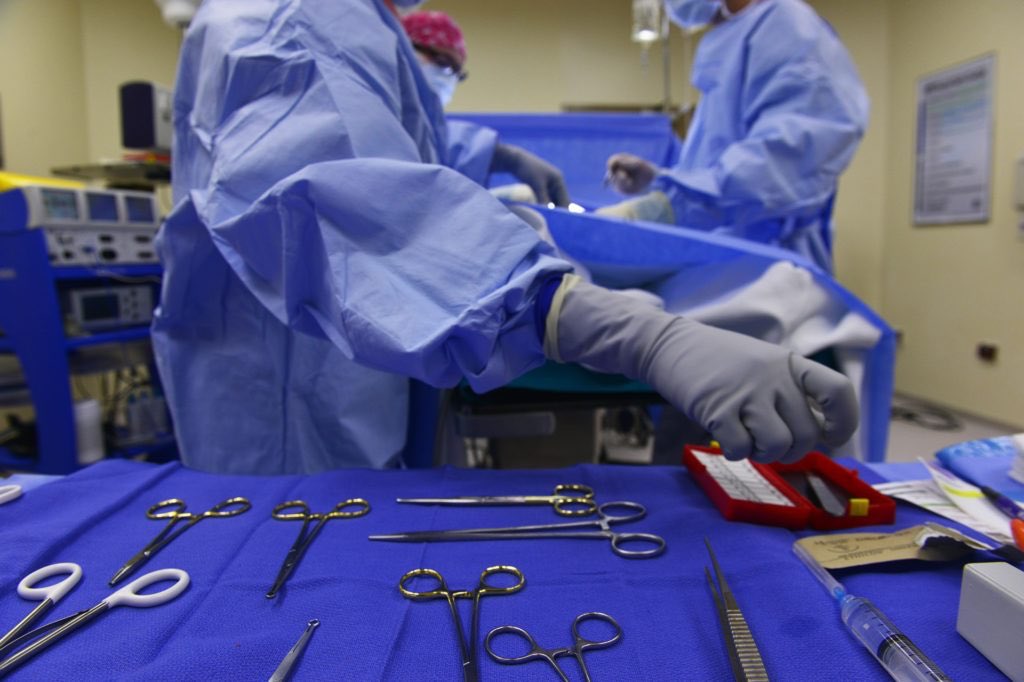Gallbladder removal surgery, also called a cholecystectomy, is the most common treatment for gallstones. Most of the time, gallstones don’t cause any symptoms. However, they can sometimes get stuck in a bile duct, blocking the flow of bile to the small intestine. This is called a gallbladder attack, and it can be very painful. Open and laparoscopic gallbladder removal surgery can eliminate gallstones and prevent them from forming in the future.
What does your gallbladder do?
Your gallbladder is part of your digestive system. It’s a small, pear-shaped organ that site just below your liver. While your liver has many functions, your gallbladder has just two: storing a digestive fluid called bile created by your liver and passing it along to your small intestine during digestion. Your gallbladder empties during digestion and refills gradually as the liver makes more bile throughout the day.
Sometimes, the bile in your gallbladder can start to calcify, forming hard “stones” that can range in size from a grain of sand to a golf ball. These are called gallstones. Usually, these stones won’t cause any obvious symptoms. However, if they get stuck in a bile duct, they can lead to intense abdominal pain and nausea. If you experience one or more painful gallbladder attacks, your provider may recommend gallbladder removal surgery to save you from dealing with that pain in the future.
Your gallbladder is important, but it’s not an essential organ. Your liver will continue making bile without your gallbladder, and your body shouldn’t have any trouble digesting food normally after your recovery.
Open and laparoscopic gallbladder removal surgery
Gallbladder removal surgery is a low-risk procedure, usually performed on an outpatient basis. A surgeon will remove your gallbladder using one of two methods: open (traditional) or laparoscopic.
- An open cholecystectomy requires a 4- to 6-inch incision in the upper right-hand side of your abdomen. Through this incision, the surgeon separates the gallbladder from the other organs and removes it from your body. This procedure typically lasts about an hour. Open gallbladder removal surgery is recommended when laparoscopic surgery isn’t a safe option, such as in patients who are obese, pregnant, or have severe liver problems.
- Laparoscopic gallbladder removal is less invasive. During this procedure, a surgeon will make 3 to 4 tiny incisions. Then, they’ll insert a long, thin tube with a video camera on the end, called a laparoscope, into one of them. This allows the surgeon to view and remove the gallbladder. Most gallbladder surgeries are laparoscopic. Laparoscopic gallbladder removal surgeries are usually associated with shorter, less painful recovery times than open surgeries.
Gallbladder removal surgeries are usually performed by a general surgeon. During surgery, patients are under general anesthesia and won’t feel any pain. Full recovery from a gallbladder removal can take four to six weeks, but many patients will be able to resume daily activities within one week.
Are there alternatives to gallbladder removal surgery?
If you have a perforation of your gallbladder or gallbladder cancer, having your gallbladder removed is the most effective option. However, if you have gallstones, there may be other options.
- Medication: Sometimes, your provider may recommend taking medication, such as ursodiol, to dissolve the gallstones. These medications take time to work, and they’re not effective against all types of gallstones. Typically, providers only recommend this route for patients who don’t want to have surgery or cannot have surgery to remove their gallstones. Gallstone medication works best for people whose gallstones haven’t yet become painful or caused bile duct blockage. They may also be used in some patients to help prevent future gallstone formation.
- Extracorporeal shockwave lithotripsy: This is another nonsurgical option to treat gallstones. It’s not as common as gallbladder removal surgery, and it’s only an option for people with small gallstones and otherwise healthy gallbladder function. During lithotripsy, high-energy sound waves are used to shock the gallbladder, which should cause gallstones to break apart and dissolve. Lithotripsy may be recommended before prescribing medication to help gallstones dissolve faster. This procedure is usually only recommended for patients who cannot undergo gallbladder removal surgery.
Finding a fair price for your gallbladder removal surgery
If your doctor recommends gallbladder removal surgery, you may have more options than you think. Surgery can be expensive, but shopping around can help you save thousands on your procedure. New Choice Health has put together gallbladder removal cost information from medical facilities all over the country to help you find a fair price for your surgery. Click here to learn more about what you should pay for your gallbladder removal surgery today.
Reviewed and updated 2/16/2023.







